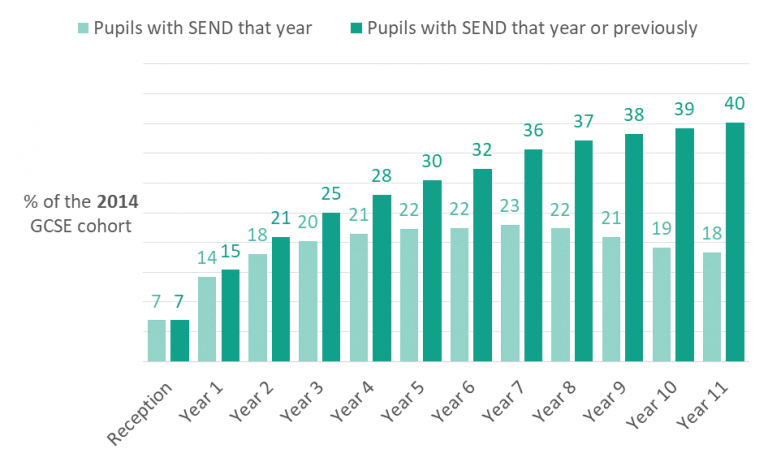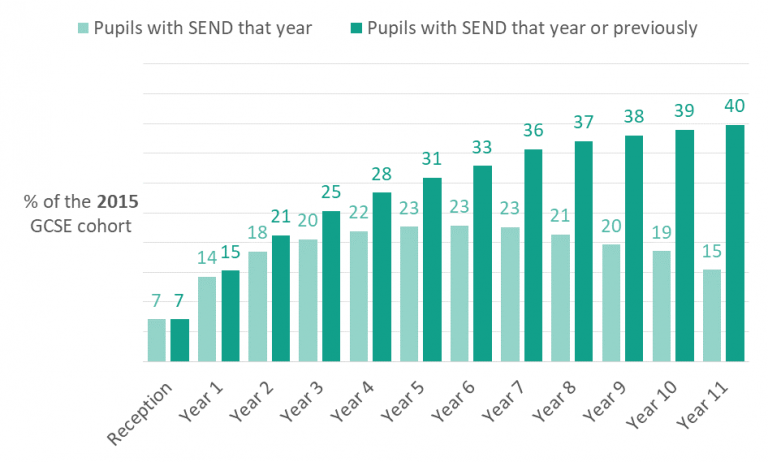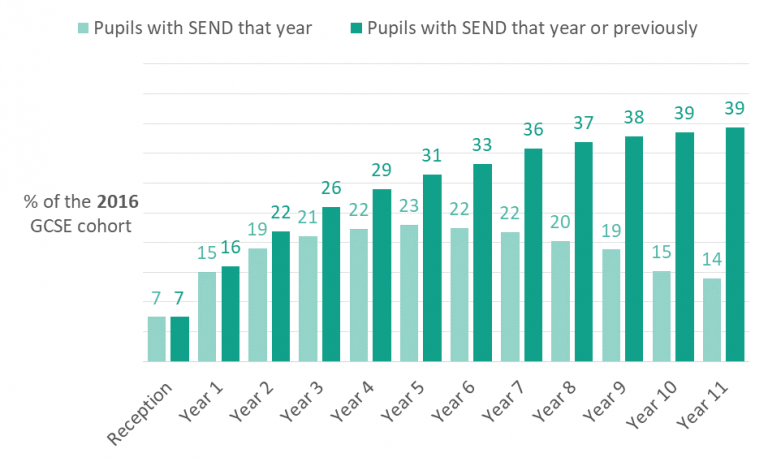New research project on Special Educational Needs and Disabilities
The Education Policy Institute is pleased to announce a new research project which will investigate how the system for identifying children with Special Educational Needs and Disabilities (SEND) works in England.
The research will use administrative data to build a detailed picture of the groups of children who are most likely to be recorded as having SEND, the numbers of children with SEND expected in each part of the country based on this risk profile, and where and when the number of children identified with SEND by their school is higher or lower than expected. The purpose of this research is to examine how fairly and effectively children have access to support for Special Educational Needs and Disabilities according to their needs. We would like to thank the Nuffield Foundation for supporting this project, and our research partners at the NIHR Maudsley Biomedical Research Centre and University of Exeter Medical School.

Preliminary analysis of the percentage of children who are identified with SEND
To launch the research project, we are releasing this note with some preliminary statistics on how many children in each age/year group schools have been identified as having SEND. Official statistics are available for the age profile of children with SEND.[1] However, because these statistics take a snapshot of the number of children with SEND at each age, they do not capture the dynamic nature of the system by which schools continue to periodically assess and review SEND status, resulting in some children ceasing to have SEND, while others are newly identified.[2] The official statistics, while valid and important, only show part of the picture, and this affects how we think about policy.
In this note, where we refer to children ‘having SEND’, we mean those children that schools have identified with SEND. It is the recorded status of children that we have analysed, which may differ from the reality of whether a special educational need exists.
In this note we present statistics for the percentage of children in each year group who have been recorded with SEND that year or in any previous year. In other words, we count how many children have ever had SEND over the course of their compulsory schooling.
Data
We have used administrative data from the National Pupil Database collected via the School Census. These data are recorded by schools to reflect their decisions about when to provide support that is different from or additional to that normally available to other children of the same age. The coverage of the data is all pupils in England who were at the end of Key Stage 4 including those in both mainstream and special schools. SEND status is only recorded for those in state-funded schools.
In this preliminary analysis we include all types of SEND need, and combine all levels of support (children with Education Health and Care Plans or statements of SEND and those with SEND support or support at School Action or School Action Plus). The analysis is conducted on the cohorts of children who reached the end of secondary school (Key Stage 4) in 2014, 2015 and 2016. Reforms to the SEND Code of Practice (which governs the decisions that schools can make about SEND) were underway during this period, therefore we have included both ‘old’ and ‘new’ SEND codes.
Results
There is a striking difference between the percentage of children who have SEND in a given year group (at one point in time) and the percentage of children who have ever had SEND in that year group or previously. While a maximum of 23 percent of children in the 2016 cohort had SEND at any one time (the peak was in Year 5 when they were aged ten), a full 39 percent were recorded with SEND at some point between Reception (age five) and Year 11 (age sixteen). This makes SEND directly relevant to four in ten children, or twelve per class of thirty on average.



Between 2014 and 2016 there has been a slight reduction in the percentage of children who have ever had SEND by Year 11, from 40% to 39%. This results from a slightly lower percentage of new SEND identifications during secondary school. There has also been a small increase in the percentage of children ceasing to have SEND during secondary school.
What other questions will the research ask?
The full research project, which is due to complete in December 2018, will consider a longer time-frame so that trends can be assessed, will examine different levels of SEND and different types of need individually, and will link the identification of SEND to a range of risk factors that predict the likelihood of SEND. We will use this framework to ask questions about when and where SEND is most likely to be under-identified (when children who have SEND are not recognised by the system), or over-identified (when children who do not have SEND are mistakenly assessed as having SEND). We will study whether some groups of children (such as disadvantaged children or black children) are more likely to be identified with some types of SEND than other children, or less likely to be identified with other types of SEND. Another strand of the research will compare children’s SEND status as recognised by schools with whether or not they have received care from NHS Child and Adolescent Mental Health Services; this strand will be based on a sample of data from South London.
Further information on the project is available here: http://www.nuffieldfoundation.org/pupil-special-educational-needs-and-disabilities-identification-access-and-patterns-mental-health-su
This project was funded by the Nuffield Foundation, but the views expressed are those of the authors and not necessarily those of the Foundation.

This analysis can be downloaded as a PDF file here.
[1] https://www.gov.uk/government/statistics/special-educational-needs-in-england-january-2016
[2] https://www.gov.uk/government/publications/send-code-of-practice-0-to-25

